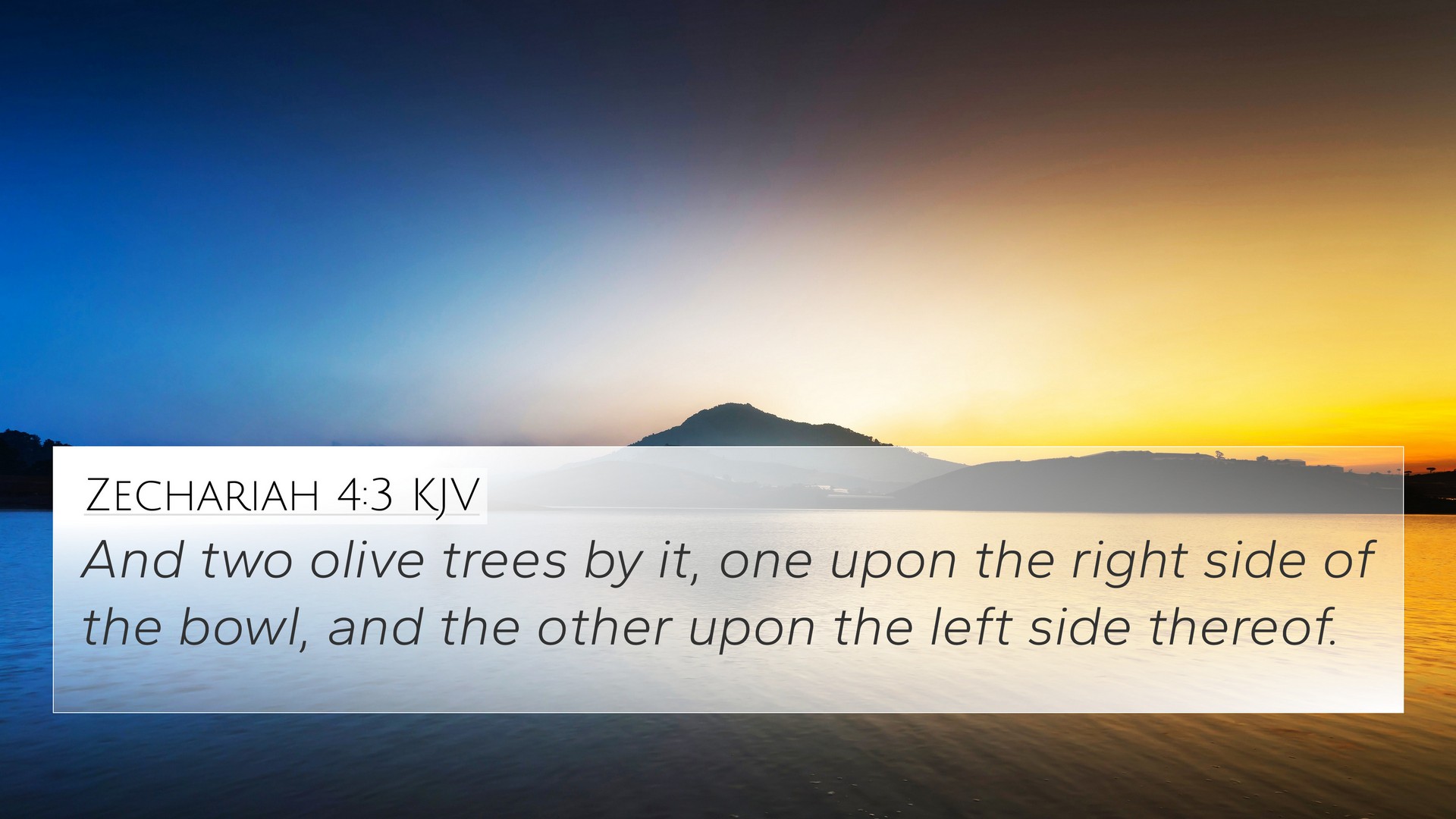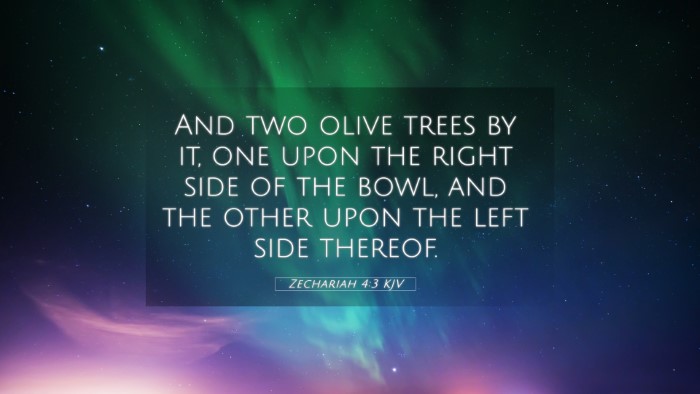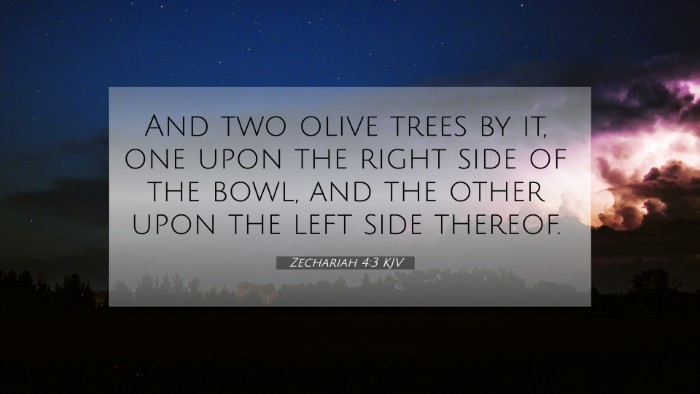Old Testament
Genesis Exodus Leviticus Numbers Deuteronomy Joshua Judges Ruth 1 Samuel 2 Samuel 1 Kings 2 Kings 1 Chronicles 2 Chronicles Ezra Nehemiah Esther Job Psalms Proverbs Ecclesiastes Song of Solomon Isaiah Jeremiah Lamentations Ezekiel Daniel Hosea Joel Amos Obadiah Jonah Micah Nahum Habakkuk Zephaniah Haggai Zechariah MalachiZechariah 4:3 Similar Verses
Zechariah 4:3 Cross References
And two olive trees by it, one upon the right side of the bowl, and the other upon the left side thereof.
Uncover the Rich Themes and Topics of This Bible Verse
Listed below are the Bible themes associated with Zechariah 4:3. We invite you to explore each theme to gain deeper insights into the Scriptures.
Zechariah 4:3 Cross Reference Verses
This section features a detailed cross-reference designed to enrich your understanding of the Scriptures. Below, you will find carefully selected verses that echo the themes and teachings related to Zechariah 4:3 KJV. Click on any image to explore detailed analyses of related Bible verses and uncover deeper theological insights.
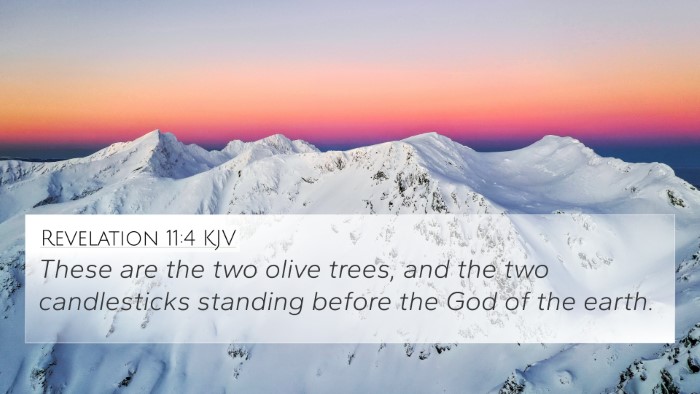
Revelation 11:4 (KJV) »
These are the two olive trees, and the two candlesticks standing before the God of the earth.
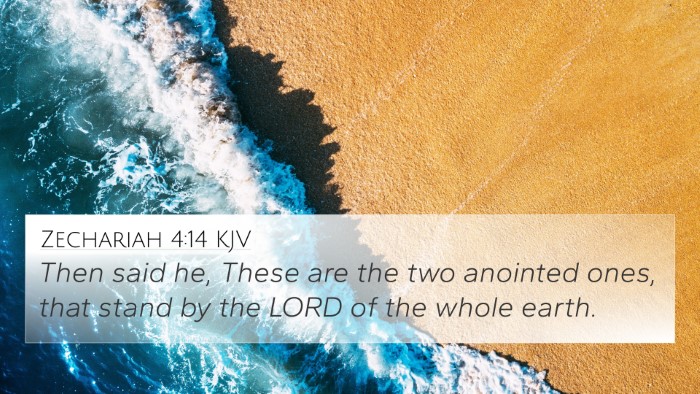
Zechariah 4:14 (KJV) »
Then said he, These are the two anointed ones, that stand by the LORD of the whole earth.
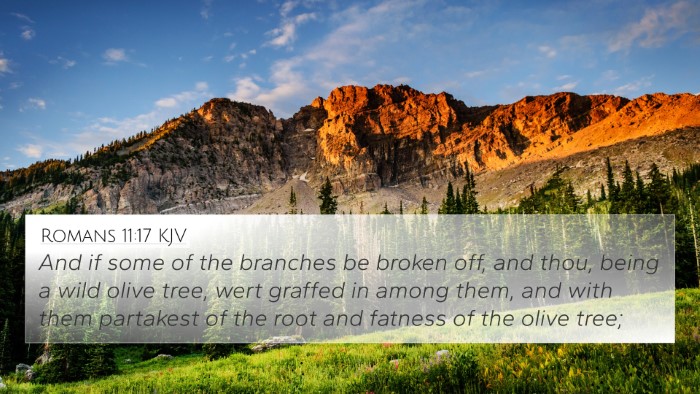
Romans 11:17 (KJV) »
And if some of the branches be broken off, and thou, being a wild olive tree, wert graffed in among them, and with them partakest of the root and fatness of the olive tree;
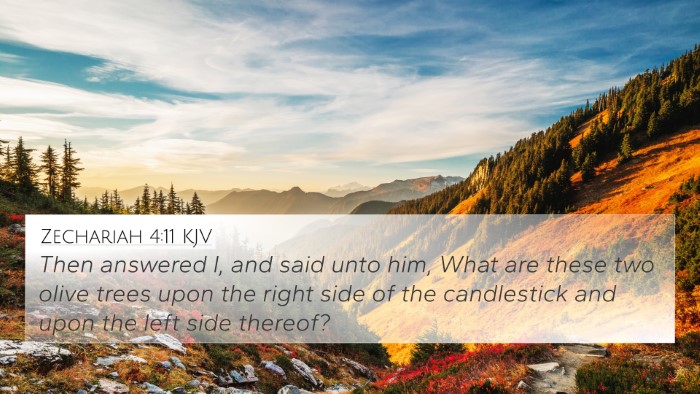
Zechariah 4:11 (KJV) »
Then answered I, and said unto him, What are these two olive trees upon the right side of the candlestick and upon the left side thereof?
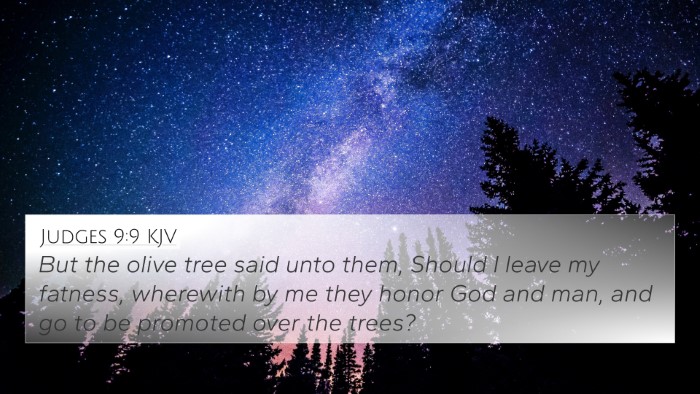
Judges 9:9 (KJV) »
But the olive tree said unto them, Should I leave my fatness, wherewith by me they honor God and man, and go to be promoted over the trees?
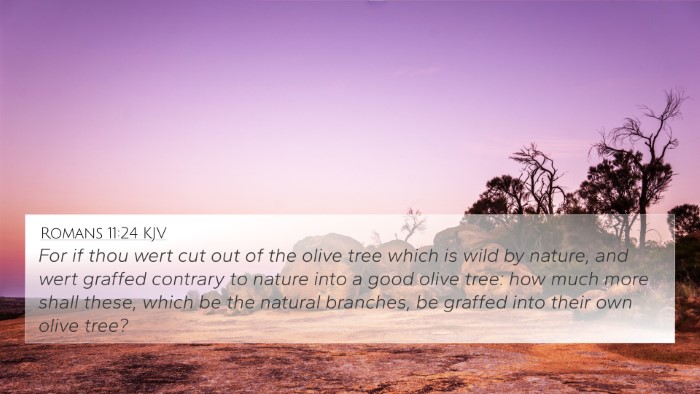
Romans 11:24 (KJV) »
For if thou wert cut out of the olive tree which is wild by nature, and wert graffed contrary to nature into a good olive tree: how much more shall these, which be the natural branches, be graffed into their own olive tree?
Zechariah 4:3 Verse Analysis and Similar Verses
Understanding Zechariah 4:3
Zechariah 4:3 reads: "And two olive trees by it, one upon the right side of the bowl, and the other upon the left side thereof." This verse is rich in symbolism and prophetic meaning, calling for an in-depth analysis of its implications within the broader biblical narrative.
Here, we synthesize insights from various public domain commentaries, including those of Matthew Henry, Albert Barnes, and Adam Clarke, to unravel the significance of the two olive trees in the context of God's anointing and the restoration of His people.
Commentary Insights
Matthew Henry's Commentary:
- Matthew Henry views the two olive trees as representing the dual anointing upon God's chosen leaders, primarily Zerubbabel and Joshua, signifying God's assistance and empowerment for the work of rebuilding the temple.
- The olive trees are also seen as a symbol of the continuous supply of spiritual nourishment, resonating with God's faithful provision for His people through the Spirit and through His Word.
Albert Barnes' Commentary:
- Albert Barnes emphasizes that the olive trees represent a spiritual and practical vision of God's sustaining power. The image indicates a continuous flow of oil, which symbolizes the Holy Spirit, essential for illuminating and empowering the church.
- Barnes also draws connections to the nature of God's covenant, wherein these trees signify His promise of restoration and strength to His people in their endeavors, reassuring them of His presence.
Adam Clarke's Commentary:
- Adam Clarke offers a view that connects the two olive trees with the concept of duality in leadership. He regards Zerubbabel and Joshua as representatives of civil and ecclesiastical authority, both receiving anointing from the divine source.
- Furthermore, Clarke explores the idea that the olive trees also symbolize Israel's spiritual revival, pointing towards the restoration of God's people as they turn back to Him and rebuild their lives and worship.
Biblical Cross-References
To further understand Zechariah 4:3, we can look at several cross-references that provide additional context and depth:
- Revelation 11:4: "These are the two olive trees and the two lampstands standing before the God of the earth." This verse directly references the olive trees, establishing their prophetic significance in the New Testament context.
- Romans 11:17: The olive tree metaphor is extended into the New Testament, symbolizing both Israel and the believers who are grafted into the promises of God.
- Exodus 27:20: Discusses the use of olive oil for the lamps in the tabernacle, reinforcing the idea of God's provision for light and guidance.
- 1 Kings 6:23: Solomon's temple featured two cherubim made of olive wood, further establishing the connection between the olive tree and sacred space.
- Isaiah 41:17-20: Portrays God's promises to the needy and turns the barren land into a source of blessing, illustrating God's restoration themes.
- Zechariah 4:14: Identifies the two anointed ones who stand by the Lord of the whole earth, enhancing the understanding of their roles in divine service.
- John 15:5: Jesus declares, "I am the vine; you are the branches," reflecting a similar theme of connection and dependency on the divine source for spiritual life.
Thematic Connections
The themes inherent in Zechariah 4:3 echo throughout scripture, establishing vital links between the Old and New Testaments. Exploring the continuity of God’s work in and through His people can be illuminating for today's believers.
Key Themes:
- God's Provision: The continuity of God's supply through the olive trees suggests His unfailing providence in times of rebuilding and restoration.
- Leadership and Anointing: The duality represented by the olive trees reflects the importance of anointed leaders in guiding the people in their faith journey.
- Spiritual Illumination: Oil symbolizes the Holy Spirit’s presence, leading to divine insight and strength necessary for fulfilling God’s mission.
- Restoration of Israel: The prophetic element points toward the larger narrative of restoration following exile, mirroring the spiritual revival in the New Testament.
Practical Application
Understanding Zechariah 4:3 offers practical insights for believers today:
- Trust in God's continual provision for spiritual growth and guidance.
- Recognize the importance of leadership roles in fostering a strong community of faith.
- Embrace the anointing of the Holy Spirit as essential to living a life that reflects Christ.
- Engage in active restoration efforts within the community, reflecting the themes of revitalization and hope.
Conclusion
The study of Zechariah 4:3 allows for rich connections within the biblical text, reinforcing the themes of anointing, provision, and restoration. As believers reflect on these themes, they find encouragement and motivation to pursue God's calling with confidence.
By utilizing tools for Bible cross-referencing, individuals can deepen their understanding and enrich their spiritual journey, connecting disparate scriptural themes into a cohesive narrative of God’s unwavering faithfulness.
